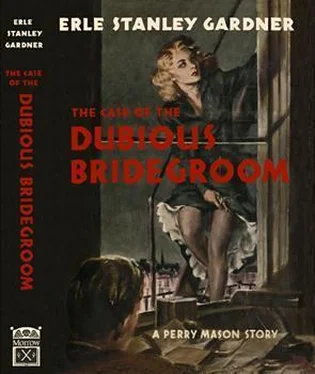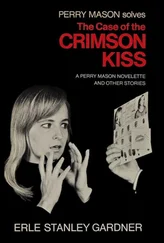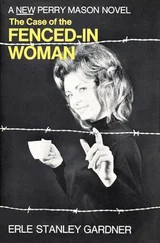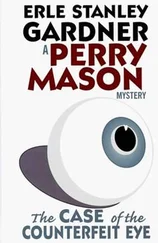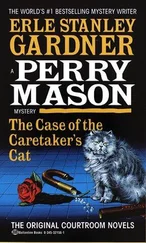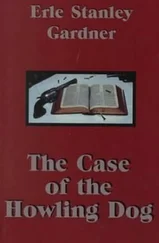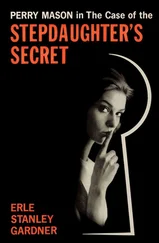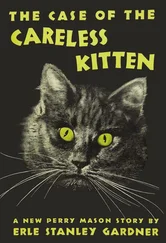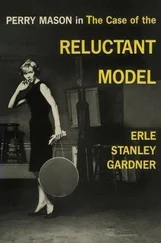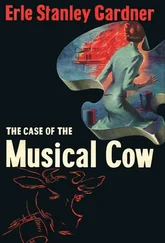Knowing that the witness who had found the body was one of Drake’s men, realizing that he would, if given the opportunity, slant his testimony so that it would be as advantageous as possible to Mason’s side of the case, the deputy district attorney handled the man with gloves.
He merely asked him if he had found, on the date in question, an automobile parked by the side of the road, had had occasion to investigate the car, and whether he had found in it the body of a woman. He brought out that the witness had found a revolver on the ground by the car and had notified the police and subsequently had seen the body at the time of the coroner’s inquest and that it was the same body.
Abruptly Jarvis tossed the ball to Perry Mason.
“You may cross-examine,” he said.
“No questions,” Mason said.
Jarvis was visibly surprised. He had expected Mason would try to lay the foundation for his defense through this witness.
The next witness was the chief of police of Oceanside.
With this man Jarvis was much more relaxed, much more at home. The police officer testified to having been summoned to the scene, to having notified the coroner and sheriff of San Diego, of having “looked the ground over” and later on, of having attended the inquest where the identity of the murdered woman was established.
Feeling his way cautiously, Jarvis sought to qualify the man as an expert in studying tracks in connection with crime. Then, awaiting Mason’s objection, the deputy showed what he could about the position of the automobile, the tracks which had been found on the ground.
Hamlin Covington returned to the courtroom, making his entrance as impressive as possible. He sat down beside his chief trial deputy, listened for a few moments, then leaned over and whispered to Jarvis, “Go ahead. Ask him what the tracks showed. Let’s put Mason in the position of objecting, of trying to keep out the evidence. Smoke him out. Get him on the defensive.”
Jarvis whispered, “We haven’t qualified him as much of an expert. Mason will rip him to pieces. He’ll take him on voir dire and rip him to pieces.”
“Let him try,” Covington said. “At least we’ll start him objecting. We’ll get him where lie has to take the case seriously.”
“All right,” Jarvis whispered, “here goes.” He rose to his feet, said to the chief of police, “Now, Chief, just what did these tracks show in regard to two cars having been parked parallel to each other?” Then Jarvis half turned to Mason, waiting for the indignant objections. Mason might not have heard the question.
“Well, it seems this car where the body was found,” the chief said, “had been parked right next to another car that had been left there, and...”
“Just a minute,” Judge Minden said. “I’d like to have that last question read again, Mr. Reporter.”
The court reporter read the question.
Judge Minden glanced expectantly at Mason.
Mason remained silent.
“Go ahead, answer the question,” Covington rasped at the witness.
“Well, it was this way,” the witness said. “The car that the body was found in had been driven right up next to another car that had been left parked there. You could see where the car that had the body had been inched around until it was in just the right position, and then the murderer just stepped across into the other car, dragged the body of the victim over behind the steering wheel and drove away. That’s the way it was done.”
“Cross-examine,” Jarvis said triumphantly.
“Let’s see if I get this,” Mason said, his manner showing that he was merely interested, but indicating a wish to see that the jury understood the situation. “You did some tracking there, Chief?”
“I did.”
“Now, you say that the car which had the body in it had been ‘inched’ into position.”
“That’s right. I have to explain something of the nature of that ground. It’s a sort of sand and decomposed granite that packs hard as concrete. You can sort of make out tracks but not tire patterns, at least not plain enough to do much with them.
“You could see where the front wheels of Ethel Garvin’s car had wobbled around a little bit as the driver tried to get the car in just exactly the position he wanted. He’d even backed once in order to slide it right up next to another set of tracks that had been made by a car that had been left standing there.”
“Yes, yes,” Mason said, his manner showing breathless interest. “Now you say that other car had been left standing there.”
“That’s right.”
“Then the woman wasn’t killed while she was driving the car.”
“No, sir, she wasn’t. You can tell from the blood spatters and the position of the clotted blood that she had been over on the right-hand side when she was shot. The man who was driving the car had pulled the trigger on the gun and then he’d driven the car with the body in it right up to this point where he’d left the other car. He only had to step across from one car to the other. Then he dragged the body across behind the steering wheel and drove away.”
“I see,” Mason said. “Now you say the tracks showed where this other car had been left there, waiting?”
“That’s right. Yes.”
Mason didn’t change the tone of his voice in the least, but as though passionately interested in the answer, said, “Just what was there about the tracks, Chief, that showed the car had been waiting?”
“Well, you could see the tracks where the car had stood there and then driven away.”
“How did that show the other car had been waiting?”
“Well, it went in straight, and then — well, when it went out it curved back to the highway. The tracks showed that.”
“I see,” Mason said, “and if the tracks hadn’t curved, Chief, where would the car have gone?”
“Well, it would have gone straight ahead.”
“And what was straight ahead?”
“Well, it couldn’t have gone straight ahead.”
“Why not? What was straight ahead?”
“The Pacific Ocean.”
“Oh, I see. Then the car had to turn.”
“Of course it had to turn.”
“Yet you say the only way that you knew the car was left waiting there was because the tracks curved?”
“Well, the car was waiting there. You could tell by the way the tracks were of the car where the murdered woman was found.”
“That’s it,” Mason agreed enthusiastically. “Now you’re getting the point I want. Just what was there in the tracks of this car to show you that it had been left waiting?”
“Well, you could see where the tracks of Ethel Garvin’s car had been manipulated around to get in just the right position.”
“Then it wasn’t anything in the tracks of the car that had been left waiting that showed you what had happened, but something you’d deduced from the tracks of an entirely different automobile.”
“Well, if you want to put it that way, yes.”
“My dear man,” Mason said, “it’s not the way I want to put it. You’re doing the putting. Just put it your own way, but kindly try and put it right.”
“Well, that’s the way it was.”
“Then you were mistaken when you said you could tell from the tracks of the getaway car that it had been left waiting there?”
“No, you could tell it from the tracks like I explained to you.”
“But what was there about the tracks of the car that had been left waiting that showed it had stood there?”
“Well, it... well, you could see from the way the other car had been sidled up to it.”
“You mean the car containing the body of the murdered woman?”
“Yes.”
Читать дальше
